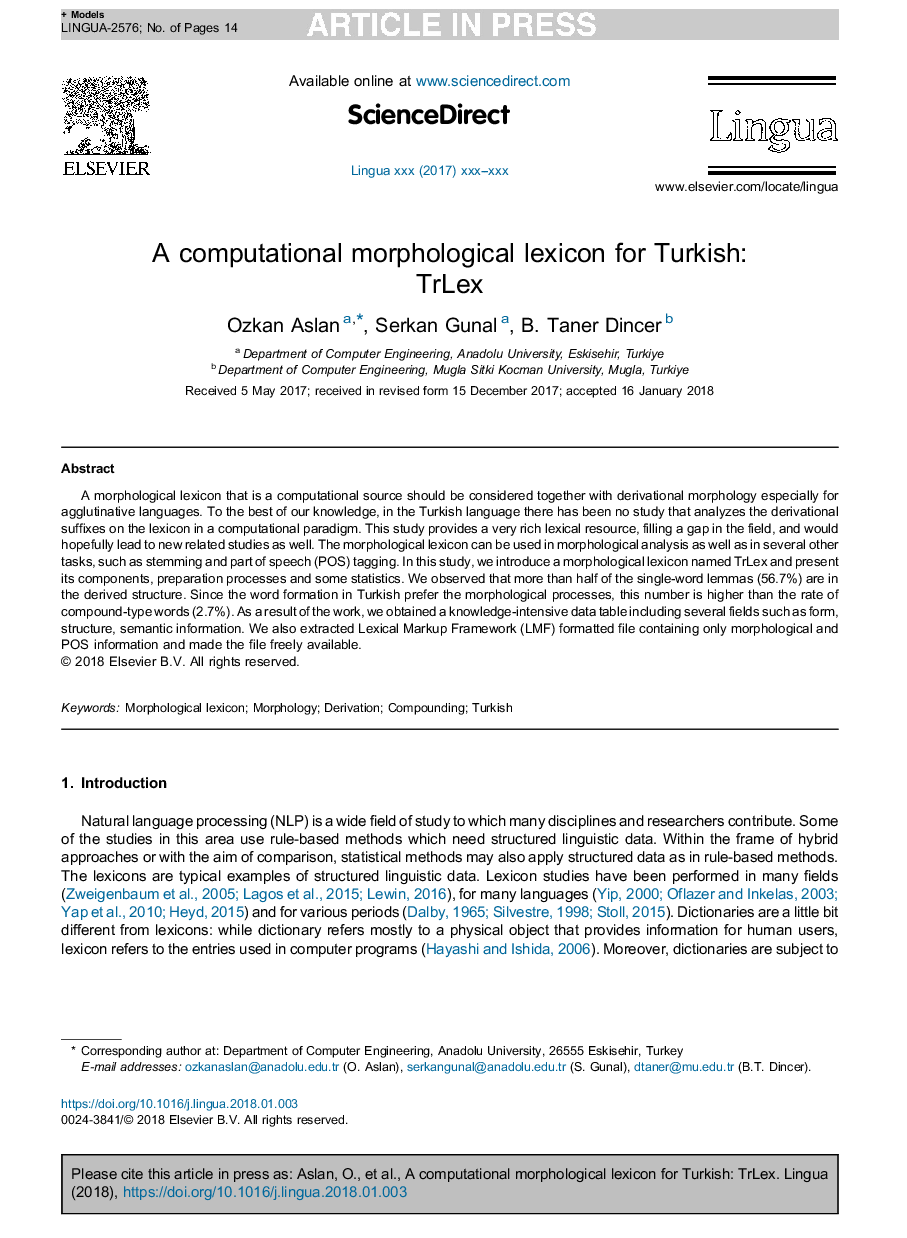| Article ID | Journal | Published Year | Pages | File Type |
|---|---|---|---|---|
| 7298361 | Lingua | 2018 | 14 Pages |
Abstract
A morphological lexicon that is a computational source should be considered together with derivational morphology especially for agglutinative languages. To the best of our knowledge, in the Turkish language there has been no study that analyzes the derivational suffixes on the lexicon in a computational paradigm. This study provides a very rich lexical resource, filling a gap in the field, and would hopefully lead to new related studies as well. The morphological lexicon can be used in morphological analysis as well as in several other tasks, such as stemming and part of speech (POS) tagging. In this study, we introduce a morphological lexicon named TrLex and present its components, preparation processes and some statistics. We observed that more than half of the single-word lemmas (56.7%) are in the derived structure. Since the word formation in Turkish prefer the morphological processes, this number is higher than the rate of compound-type words (2.7%). As a result of the work, we obtained a knowledge-intensive data table including several fields such as form, structure, semantic information. We also extracted Lexical Markup Framework (LMF) formatted file containing only morphological and POS information and made the file freely available.
Related Topics
Social Sciences and Humanities
Arts and Humanities
Language and Linguistics
Authors
Ozkan Aslan, Serkan Gunal, B. Taner Dincer,
